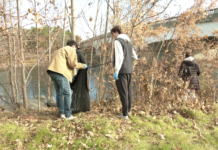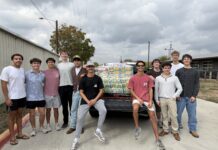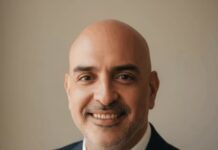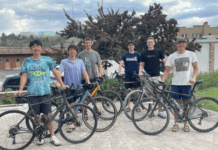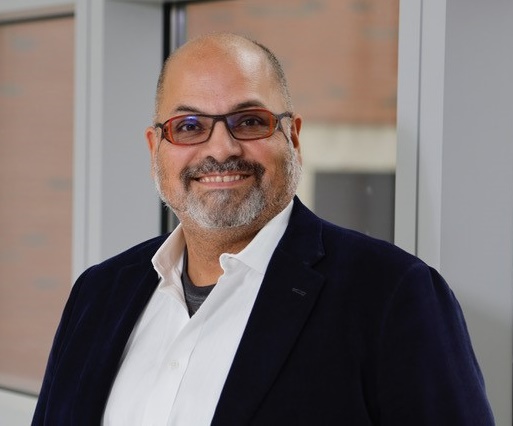When compared among nationally recognized professors and medical science researchers, Timothy Huerta, Ph.D. (Cal State LA) stands out among his peers. Currently the Associate Dean of Research Information Technology and Chief Research Information Officer for the Ohio State University College of Medicine and the Wexner Medical Center, he also leads an industry-university partnership from the National Science Foundation, provides strategic data to the Patient-Centered Outcomes Research Institute, and oversees a Healing Communities Study focused on reducing Opioid-related deaths in Ohio.
While the responsibilities and titles are impressive, he views his work from the servant leader perspective he learned as his chapter Commander in Sigma Nu. “My job now is to help the university be ready for where it needs to be in three years,” he says, “And not just where we need to be now.”
Huerta effectively filled that role during the onset of COVID-19 and in the subsequent years since.
COVID – Calculations and Complications
In January of 2020, as the coronavirus began its march across the United States, hospital admissions were on the rise, with patients suffering from severe respiratory distress. Huerta saw there were no treatments, no tests, and few answers.
By March 2020, universities from around the world, including OSU, were working with the Centers for Disease Control and Prevention (CDC) and other agencies to establish a test to identify COVID-19. But there was a glitch. Labs in research settings are set up differently than in emergency rooms, so tests built in university laboratories do not work in hospitals.
“No pathways existed to get test results from sequencer to hospital and on to the health officials that needed it,” explained Huerta.
What was needed was someone who understood both healthcare and scientific laboratories and how to close the gap between the two. Huerta knew how to fill that need.
In the early 2000s, his first post-doctorate job was with the US National Cancer Institute in Vancouver, Canada. He focused on the dynamics behind why people smoke, along with healthcare and epidemiology (the study of diseases) implications. Although his work was complex, Huerta sums it up as “implementation science.” The goal was to figure out how to get people to do what they know they need to do – like stop smoking.
Huerta spent time researching how to help healthcare systems create collaborative networks by breaking down silos of information and resources to ensure patients had access to what they needed. “Getting people connected to doctors, and the doctors connected to other doctors, so they knew how to treat people was a big [focus] for me,” said Huerta, who in 2006 was named the first National Science Foundation’s faculty fellow to the National Center for Supercomputing Applications.
His knowledge of data and system applications was in high demand in the academic world. In 2013, after several years as a tenured professor at Texas Tech University, he was recruited to the Ohio State University with the mission of building a new program in health services research in the College of Medicine. “The opportunity to design systems and protocols that could directly impact peoples’ lives was too much to pass up,” Huerta said.
He began researching how people use information technology, including social media, to make decisions about their healthcare and how hospitals use technology to help individuals manage patient care. Huerta’s work and connections would prove crucial in the coming years as his research grew increasingly entwined with healthcare systems.
At the onset of COVID-19 in early 2020, few people understood how to assemble the technologies necessary to help the science, technology, and healthcare sectors respond. On the other hand, Huerta had spent his entire academic life understanding how people and technology needed to intersect. At OSU, he put that knowledge to work amid a global pandemic.






